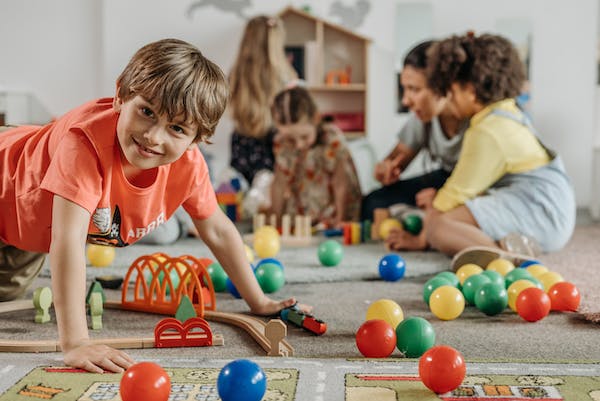Understanding Sensory Needs:
Individuals with autism often experience sensory processing differences, where their brains may interpret sensory information differently compared to neuro typical individuals. This can lead to challenges in regulating sensory input, resulting in overstimulation or under stimulation. Sensory toys address these needs by providing controlled sensory experiences, aiding in self-regulation and sensory integration.
Types of Sensory Toys:
Sensory toys come in various forms, catering to different sensory preferences and needs. Visual sensory toys, such as light-up toys and colorful visual stimulators, stimulate the visual senses, promoting focus and attention. Tactile toys, like textured balls and squishy toys, offer tactile stimulation, aiding in tactile sensory processing and fine motor skills development. Auditory toys, such as musical instruments and sound machines, provide auditory stimulation, supporting auditory processing and sensory exploration. Additionally, there are proprioceptive and vestibular toys, like swings and trampolines, which offer deep pressure and movement input, promoting body awareness and balance.
Benefits of Sensory Toys:
The benefits of sensory toys for individuals with autism are manifold. Firstly, these toys provide a safe and controlled environment for sensory exploration, allowing individuals to engage with different stimuli at their own pace. This helps in desensitizing individuals to sensory triggers and reducing sensory aversions. Secondly, sensory toys promote self-regulation by offering calming sensory input, helping individuals to manage stress and anxiety effectively. Thirdly, these toys encourage sensory integration, enabling individuals to process and respond to sensory information more efficiently. Lastly, sensory toys facilitate social interaction and communication, as they can be used collaboratively in therapeutic settings or during playtime with peers and family members.
Incorporating Sensory Toys:
Integrating sensory toys into daily routines and activities is essential for maximizing their therapeutic benefits. Parents, caregivers, and educators can incorporate sensory toys into sensory diets, which are personalized schedules of sensory activities tailored to meet individual sensory needs. Sensory toys can also be used as tools for sensory breaks, providing a quick respite during moments of sensory overload. Moreover, sensory toys can enhance learning experiences by making educational activities more engaging and interactive.
- Enhancing Communication and Social Skills: Sensory toys offer a unique avenue for individuals with autism to engage in social interaction and communication. Many sensory toys are designed for cooperative play, encouraging individuals to share experiences and communicate with peers. For instance, playing with a sensory ball can facilitate turn-taking and joint attention, essential skills for social interaction. Moreover, sensory-rich environments created by these toys can serve as catalysts for communication, as individuals may use gestures, vocalizations, or even words to express their sensory experiences.
- Promoting Emotional Regulation: Individuals with autism often struggle with emotional regulation, experiencing heightened levels of stress and anxiety. Sensory toys provide a therapeutic outlet for managing emotions by offering calming sensory input. For example, weighted blankets and sensory pillows provide deep pressure stimulation, which can help soothe anxiety and promote relaxation. Additionally, fidget toys, such as stress balls and textured rings, offer a discreet way to channel nervous energy, enabling individuals to stay focused and composed in various settings.
- Supporting Sensory Integration and Processing: Sensory integration is the ability to organize and interpret sensory information from the environment effectively. Individuals with autism may experience difficulties in sensory integration, leading to sensory processing challenges. Sensory toys facilitate sensory integration by providing structured sensory experiences that help individuals make sense of the world around them. By engaging with different textures, sounds, and movements, individuals can gradually improve their sensory processing skills, leading to better self-regulation and adaptive behavior.
- Encouraging Exploration and Creativity: Sensory toys ignite curiosity and foster creativity in individuals with autism. These toys offer a wide range of sensory experiences, from exploring new textures to experimenting with cause-and-effect relationships. For instance, sensory bins filled with materials like rice, sand, or water provide opportunities for tactile exploration and imaginative play. Moreover, sensory art supplies, such as scented markers and textured paints, encourage self-expression and creativity, allowing individuals to communicate their sensory preferences through art.
- Empowering Independence and Self-Advocacy: Incorporating sensory toys into daily routines empowers individuals with autism to advocate for their sensory needs and preferences. By providing choices and opportunities for self-directed sensory activities, caregivers and educators can foster independence and self-awareness. For example, offering a selection of sensory toys during sensory breaks allows individuals to choose the tools like Game development that best meet their needs at that moment. This sense of autonomy not only enhances self-esteem but also equips individuals with valuable self-regulation strategies for navigating everyday challenges. conclusion
sensory toys serve as invaluable resources for individuals with autism, offering a myriad of benefits across various domains of development. From enhancing communication and social skills to promoting emotional regulation and sensory integration, these toys play a vital role in nurturing the unique abilities and potential of individuals with autism. By recognizing the importance of sensory diversity and incorporating sensory toys into therapeutic interventions and everyday routines, we can create a more inclusive and supportive environment where individuals with autism can thrive. for more related articles you can click Here



